Seeing double: Spitzer captures our galaxy's twin
June
28: What would our Milky Way galaxy look like if we could travel
outside it and snap a picture? It might look a lot like a new image by NASA's
Spitzer Space Telescope of a spiral galaxy called NGC 7331 — a virtual twin
of our Milky Way. The picture shows our twin as never before. Its swirling arms
spin outward from a central bulge of light, which is outlined by a ring of actively
forming stars.
 FULL STORY FULL STORY
 |  |

|
 |
Saturn's rotation is a puzzle
June
28: On approach to Saturn, data obtained by the Cassini spacecraft
are already posing a puzzling question: How long is the day on Saturn? Cassini
took readings of the day-length indicator regarded as most reliable — the
rhythm of natural radio signals from the planet. The result was 6 minutes longer
than that measured by the Voyager 1 and Voyager 2 spacecraft, which flew by Saturn
in 1980 and 1981.
 FULL STORY FULL STORY
 |  |
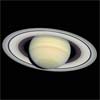
|
 |
Scientists discover two new interstellar molecules
June
27: A team of scientists using the Green Bank Telescope has discovered
two new molecules in an interstellar cloud near the centre of the Milky Way Galaxy.
This discovery is already helping astronomers better understand the complex processes
by which large molecules form in space.
 FULL STORY FULL STORY
 |  |
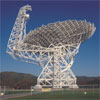
|
 |
Camera to shoot first direct images of exoplanets
June
26: A University of Arizona astronomer and his collaborators are
using a novel camera to hunt for extrasolar planets. Their camera has already
captured stunning images of Saturn's moon, Titan, and discovered an object just
27 times the mass of Jupiter. They hope the camera will be the first to directly
photograph faint gas-giants similar to Jupiter in solar systems beyond our own.
 FULL STORY FULL STORY
 |  |

|
 |
Getting closer to Titan
June
25: Irregular bright and dark regions of yet unidentified composition
and character are becoming increasingly visible on Titan's surface as Cassini
approaches its scheduled first flyby of Saturn's largest moon on July 2, 2004.
 FULL STORY FULL STORY
 |  |
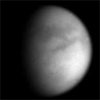
|
 |
Phoebe moon likely born in outer solar system
June
23: NASA unveiled a spectacular high-resolution mosaic of Saturn's
enigmatic moon Phoebe on June 23rd, along with other data from the Saturn-bound
Cassini probe showing the moon formed in the extreme outer solar system and was
later captured by the ringed planet's gravity.
 FULL STORY FULL STORY
 |  |
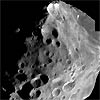
|
 |
Chandra finds mystery at Milky Way centre
June
22: A long look by NASA's Chandra X-ray Observatory has revealed
new evidence that extremely hot gas exists in a large region at the centre of
the Milky Way. The intensity and spectrum of the high-energy X-rays produced by
this gas present a puzzle as to how it is being heated.
 FULL STORY FULL STORY
 |  |

|
 |
Link found between Earth's oceans and Jupiter's bands
June
22: Scientists have discovered a striking similarity between certain
ocean currents on Earth and the bands that characterize the surface of large,
gaseous planets like Jupiter.
 FULL STORY FULL STORY
 |  |

|
 |
New view of Saturn's rings and moons from Cassini
June
21: Saturn's magnificent rings show some of their intricate structure
in this image taken by the Cassini spacecraft's narrow angle camera. Although
they appear to be solid structures, the rings are composed of billions of individual
particles, each one orbiting the planet on its own path.
 FULL STORY FULL STORY
 |  |
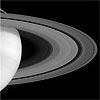
|
 |
Scientists ask if comets once flooded Earth's oceans
June
19: Did the Earth form with water locked into its rocks, which
then gradually leaked out over millions of years? Or did the occasional impacting
comet provide Earth's oceans? The Ptolemy experiment on Europe's Rosetta comet
probe may just find out.
 FULL STORY FULL STORY
 |  |

|
 |
'Blazar' illuminates era when stars, galaxies formed
June
18: Astrophysicists at Stanford report spotting a black hole so
massive that it's more than 10 billion times the mass of our Sun. Moreover, this
heavyweight is so far away that the scientists think it formed when the universe
first began to light up with stars and galaxies, so it may provide a window into
our cosmological origins.
 FULL STORY FULL STORY
 |  |

|
 |
Saturn in infrared
June
18: Saturn's bright equatorial band displays an exquisite swirl
near the planet's eastern limb. This image was taken with the Cassini spacecraft's
narrow angle camera from a distance of 14.5 million miles from Saturn.
 FULL STORY FULL STORY
 |  |
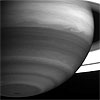
|
 |
Stardust reveals surprising anatomy of a comet
June
17: Findings from a historic encounter between NASA's Stardust
spacecraft and Comet Wild 2 have revealed it to be a much stranger world
than previously believed. The comet's rigid surface, dotted with towering pinnacles,
plunging craters, steep cliffs, and dozens of jets spewing violently, has surprised
scientists.
 FULL STORY FULL STORY
 |  |

|
 |
Comet's dust clouds hit probe 'like thunderbolt'
June
17: Two swarms of microscopic cometary dust blasted NASA's Stardust
spacecraft in short but intense bursts as it approached within 150 miles of Comet
Wild 2 last January, data from a University of Chicago instrument flying aboard
the spacecraft has revealed.
 FULL STORY FULL STORY
 |  |

|
 |
Mass of ultra-cool brown dwarf binary measured
June
15: An international team of astronomers using the world's biggest
telescopes have directly measured the mass of an ultra-cool brown dwarf star and
its companion dwarf star for the first time.
 FULL
STORY FULL
STORY
 |  |

|
 |
Phoebe's surface gives scientists clues to its origin
June
14: Images collected during Cassini's close flyby of Saturn's
moon, Phoebe, have yielded strong evidence that the tiny object may contain ice-rich
material, overlain with a thin layer of darker material perhaps 300 to 500 metres
(980 to 1,600 feet) thick.
 FULL STORY FULL STORY
 |  |
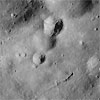
|
 |
Jupiter's moon Io is hottest body outside the Sun
June
11: The hottest spot in the solar system is neither Mercury, Venus,
nor St. Louis in the summer. Io, one of the four satellites that the Italian astronomer
Galileo discovered orbiting Jupiter almost 400 years ago, takes that prize.
 FULL STORY FULL STORY
 |  |

|
 |
Galaxy formation theory no longer conflicts
June
11: Astrophysicists led by the University of Chicago's Andrey
Kravtsov have resolved an embarrassing contradiction between a favoured theory
of how galaxies form and what astronomers see in their telescopes.
 FULL STORY FULL STORY
 |  |

|
 |
Venus transit widely observed
June
10: Clear skies over most of the British Isles granted observers
excellent views of Venus crossing the face of the Sun during the morning and early
afternoon of June 8th, a rare and beautiful sight last seen in 1882.
 ASTRONOMY NOW SPECIAL REPORT ASTRONOMY NOW SPECIAL REPORT
 |  |
 |
 |
Radio telescopes reveal youngest stellar corpse
June
10: Astronomers using a global combination of radio telescopes
to study a stellar explosion some 30 million light-years from Earth have likely
discovered either the youngest black hole or the youngest neutron star known in
the Universe.
 FULL STORY FULL STORY
 |  |

|
 |
New theory for first stars
June
7: The very first stars that formed early in the history of the
universe were smaller than the massive giants implied by the results of a NASA
research satellite, but still larger than the typical stars found in our galaxy
today, according to a research team led by the University of Chicago's Jason Tumlinson.
 FULL STORY FULL STORY
 |  |

|
 |
FUSE pierces the Veil
June
7: The Veil Nebula, a delicate network of glowing gaseous filaments
in the northern constellation of Cygnus the Swan, has long been a favourite of
both amateur and professional astronomers. Part of a much larger nebula known
as the Cygnus Loop, the Veil is comprised of the leftovers of a star that exploded
between 5,000 and 8,000 years ago.
 FULL STORY FULL STORY
 |  |

|
 |
Origin of enigmatic galactic centre filaments revealed
June
7: Twenty years ago, astronomers discovered a number of enigmatic
radio-emitting filaments concentrated near the centre of the Milky Way Galaxy.
These features initially defied explanation, but a new study of radio images of
the Galactic centre may point to their possible source.
 FULL STORY FULL STORY
 |  |

|
 |
Hubble refines distance to Pleiades star cluster
June
6: Astronomers using NASA's Hubble Space Telescope have helped
settle a mystery that has puzzled scientists concerning the exact distance to
the famous nearby star cluster known as the Pleiades, or the Seven Sisters.
 FULL STORY FULL STORY
 |  |

|
 |
Faintest survey of distant galaxies taken by Hubble
June
6: Researchers have measured accurate distances to several faint,
red galaxies seen in the Hubble Ultra Deep Field, confirming that three quarters
are among the most distant galaxies yet studied.
 FULL STORY FULL STORY
 |  |

|
 |
Hubble reveals details in heart of the Trifid Nebula
June
5: Three huge intersecting dark lanes of interstellar dust make
the Trifid Nebula one of the most recognizable and striking star birth regions
in the night sky. The dust, silhouetted against glowing gas and illuminated by
starlight, cradles the bright stars at the heart of the Trifid Nebula. It lies
within our own Milky Way galaxy about 9,000 light-years from Earth.
 FULL STORY FULL STORY
 |  |

|
 |
Pinwheel Galaxy's hidden wonders revealed
June
4: Like nosy neighbours, astronomers are spying on one of the
nearest galaxies to our Milky Way. In studying the Pinwheel Galaxy, also known
as Messier 33 (M33), they seek not malicious gossip but new knowledge as they
search for clues to how galaxies like our own are born, live and die.
 FULL STORY FULL STORY
 |  |

|
 |
Cassini getting ever closer to colourful Saturn
June
3: As Cassini coasts into the final month of its nearly seven-year
trek, the serene majesty of its destination looms ahead. The spacecraft's cameras
are functioning beautifully and continue to return stunning views from Cassini's
position, 750 million miles from Earth and now 9.8 million miles from Saturn.
 FULL STORY FULL STORY
 SATURN ORBIT INSERTION TIMELINE SATURN ORBIT INSERTION TIMELINE
 |  |
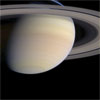
|
 |
Proof found for gamma-ray burst in Milky Way
June
3: Combined data from NASA's Chandra X-ray Observatory and infrared
observations with the Palomar 200-inch telescope have uncovered evidence that
a gamma-ray burst, one of nature's most catastrophic explosions, occurred in our
Galaxy a few thousand years ago. The supernova remnant, W49B, may also be the
first remnant of a gamma-ray burst discovered in the Milky Way.
 FULL STORY FULL STORY
 |  |

|
 |
Looking to catch stars in the act as planets form
June
3: For young stars, the peak age for planet formation is around
1 to 3 million years. By 10 million years old, their resources are exhausted and
they retire to a life on the stellar "main sequence." Using telescopes on the
ground and in space, a team of astronomers is studying Sun-like stars in their
waning formative years. They seek to refine our understanding of planet formation
by studying dusty protoplanetary disks around such stars.
 FULL STORY FULL STORY
 |  |

|
 |
Great Observatories find black holes, hidden objects
June
1: On June 1st, astronomers unveiled the deepest images from NASA's
new Spitzer Space Telescope and announced the detection of distant objects —
including several supermassive black holes — that are nearly invisible in
even the deepest images from telescopes operating at other wavelengths.
 FULL STORY FULL STORY
 |  |

|
 |



